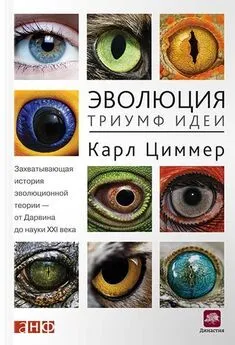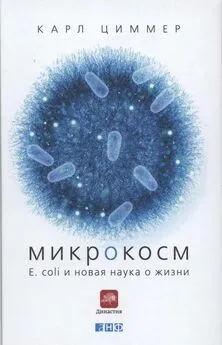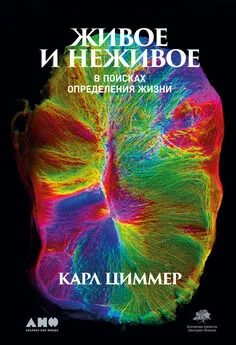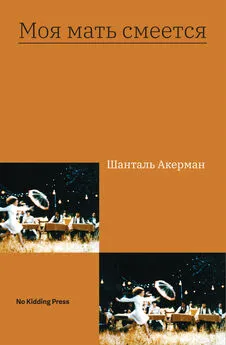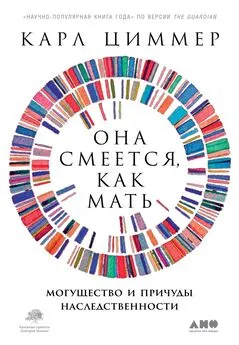Карл Циммер - Она смеется, как мать [Могущество и причуды наследственности] [litres]
- Название:Она смеется, как мать [Могущество и причуды наследственности] [litres]
- Автор:
- Жанр:
- Издательство:Литагент Альпина
- Год:2020
- Город:Москва
- ISBN:978-5-0013-9210-1
- Рейтинг:
- Избранное:Добавить в избранное
-
Отзывы:
-
Ваша оценка:
Карл Циммер - Она смеется, как мать [Могущество и причуды наследственности] [litres] краткое содержание
И культура, и традиции, география и экономика, технологии и то, в каком состоянии мы оставим планету, наконец. По мере развития науки появляется все больше способов вмешиваться в разные формы наследственности, что открывает потрясающие возможности, но одновременно ставит новые проблемы.
Технология CRISPR-Cas9, используемая для редактирования генома, генный драйв и создание яйцеклетки и сперматозоида из клеток кожи – список открытий растет с каждым днем, давая достаточно поводов для оптимизма… или беспокойства. В любом случае прежним мир уже не будет.
Карл Циммер знаменит своим умением рассказывать понятно. В этой важнейшей книге, которая основана на самых последних исследованиях и научных прорывах, автор снова доказал свое звание одного из лучших научных журналистов в мире.
Она смеется, как мать [Могущество и причуды наследственности] [litres] - читать онлайн бесплатно ознакомительный отрывок
Интервал:
Закладка:
Reich, David, Richard E. Green, Martin Kircher, Johannes Krause, Nick Patterson, Eric Y. Durand, Bence Viola, and others. 2010. “Genetic History of an Archaic Hominin Group from Denisova Cave in Siberia.” Nature 468: 1053–60.
Reid, James В., and John J. Ross. 2011. “Mendel’s Genes: Toward a Full Molecular Characterization.” Genetics 189: 3–10.
Reilly, Philip R. 1991. The Surgical Solution: A History of Involuntary Sterilization in the United States. Baltimore: Johns Hopkins University Press.
________. 2015. “Eugenics and Involuntary Sterilization: 1907–2015.” Annual Review of Genomics and Human Genetics 16: 351–68.
Rende, Richard D., Robert Plomin, and Steven G. Vandenberg. 1990. “Who Discovered the Twin Method?” Behavior Genetics 20: 277–85.
Richards, Martin. 2008. “Artificial Insemination and Eugenics: Celibate Motherhood, Eutelegenesis and Germinal Choice.” Studies in History and Philosophy of Biological and Biomedical Sciences 39: 211–21.
Richards, W. A. 1980. “The Import of Firearms into West Africa in the Eighteenth Century.” Journal of African History 21: 43–59.
Ried, Thomas. 2009. “Homage to Theodor Boveri (1862-1915): Boveri’s Theory of Cancer as a Disease of the Chromosomes, and the Landscape of Genomic Imbalances in Human Carcinomas.” Environmental and Molecular Mutagenesis 50: 593–601.
Rietveld, Cornelius A., Tonu Esko, Gail Davies, Tune H. Pers, and others. 2014. “Common Genetic Variants Associated with Cognitive Performance Identified Using the Proxy-Phenotype Method.” Proceedings of the National Academy of Sciences of the United States of America 111: 13790–94.
________, Sarah E. Medland, Jaime Derringer, Jian Yang, Tonu Esko, Nicolas W. Martin, Harm-Jan Westra, and others. 2013. “GWAS of 126,559 Individuals Identifies Genetic Variants Associated with Educational Attainment.” Science 340: 1467–71.
Rijnink, Emilic С Marlies E. Penning, Ron Wolterbeek, Suzanne Wilhelmus, Malu Zandbergen, Sjoerd G. van Duinen, Joke Schutte, Jan A. Bruijn, and Ingeborg M. Bajema. 2015. “Tissue Microchimerism Is Increased During Pregnancy: A Human Autopsy Study.” Molecular Human Reproduction 21, no. 11. doi: 10.1093/molehr/gav047.
Rindermann, Heiner, and Stefan Pichelmann. 2015. “Future Cognitive Ability: US IQ Prediction Until 2060 Based on NAEP.” PLOS One 10: e0138412.
Riquet, Florentine, Alexis Simon, and Nicolas Bierne. 2017. “Weird Genotypes? Don’t Discard Them, Transmissible Cancer Could Be an Explanation.” Evolutionary Applications 10: 140–45.
Risch, Neil, and Kathleen Merikangras. 1996. “The Future of Genetic Studies of Complex Human Diseases.” Science 273: 1516–17.
Ritchie, Stuart. 2015. Intelligence: All That Matters. London: Hodder & Stoughton.
Roberts, Dorothy. 2015. “Can Research on the Genetics of Intelligence Be ‘Socially Neutral’?” Hastings Center Report 45, Suppl 1, S50S53.
Robinson, Michael F. 2016. The Lost White Tribe: Explorers. Scientists, and the Theory That Changed a Continent. Oxford: Oxford University Press.
Robson. K. J., T. Chandra, R. T. MacGillivray, and S. L. Woo. 1982. “Polysome Immunoprecipitation of Phenylalanine Hydroxylase MRNA from Rat Liver and Cloning of Its CDNA.” Proceedings of the National Academy of Sciences of the United States of America 79: 4701–05.
Rodgers, Ali В., and Tracy L. Bale. 2015. “Germ Cell Origins of Posttraumatic Stress Disorder Risk: The Transgenerational Impact of Parental Stress Experience.” Biological Psychiatry 78: 307–14.
________, Christopher P. Morgan, N. Adrian Leu, and Tracy L. Bale. 2015. “Transgenerational Epigenetic Programming Via Sperm MicroRNA Recapitulates Effects of Paternal Stress.” Proceedings of the National Academy of Sciences of the United States of America 112. doi: 10.1073/pnas.1508347112.
Roebroeks. Wil, and Marie Soressi. 2016. “Neandertals Revised.” Proceedings of the National Academy of Sciences of the United States of America 113: 6372–79.
Roewer, Lutz. 2013. “DNA Fingerprinting in Forensics: Past, Present, Future.” Investigative Genetics 4, no. 1. doi: I0.1186/20412223422.
Roger, Andrew J., Sergio A. Munoz-Gomez, and Ryoma Kamikawa. 2017. “The Origin and Diversification of Mitochondria.” Current Biology 27: R1177R1192.
Rogers, Lois. 1998. “Baby Created from Two Mothers Raises Hopes for Childless.” Sunday Times, June 14.
“Roots Revisited.” 2016. 23andMe blog, May 30. https://blog.23andme.com/ancestry/roots-revisited/(accessed August 3, 2017).
Rose, Steven. 1972. “Environmental Effects on Brain and Behaviour.” In Race, Culture and Intelligence. Edited by Ken Richardson, David Spears, and Martin Richards. Harmondsworth, UK: Penguin Books.
Rose, Todd. 2015. The End of Average: How We Succeed in a World That Values Sameness. New York: HarperOne.
Rose, Willie Lee. 1976. “An American Family.” New York Review of Books, November 11.
Rosenberg, Eugene, and Ilana Zilber-Rosenberg. 2016. “Microbes Drive Evolution of Animals and Plants: The Hologenome Concept.” mBio 7: e01395–15.
Rosenberg, Noah A- and Michael D. Edge. In press. “Genetic Clusters and the Race Debates: A Perspective from Population Genetics.” In Genetic Clusters and the Race Debates: A Perspective from Population Genetics. Edited by Quayshawn N. Spencer. Oxford: Oxford University Press.
________, Jonathan K. Pritchard, James L. Weber, Howard M. Cann, Kenneth K. Kidd, Lev A. Zhivotovsky, and Marcus W. Feldman. 2002. “Genetic Structure of Human Populations.” Science 298: 2381–85.
Rosenbloom, Arlan L., Jaime Guevara-Aguirre, Ron G. Rosenfeld, and Paul J. Fielder. 1990. “The Little Women of Loja – Growth Hormone-Receptor Deficiency in an Inbred Population of Southern Ecuador.” New England Journal of Medicine 323: 1367–74.
Ross, Cody Т., Peter J. Richerson, and Deborah S. Rogers. 2014. “Mechanisms of Cultural Change and the Transition to Sustainability.” In Global Environmental Change. Edited by Bill Freedman. Springer Netherlands.
Rowley-Conwy, Peter, and Robert Layton. 2011. “Foraging and Farming as Niche Construction: Stable and Unstable Adaptations.” Philosophical Transactions of the Royal Society В 366: 849–62.
Rubin, Beatrix P. 2009. “Changing Brains: The Emergence of the Field of Adult Neurogenesis.” BioSocieties 4: 407–24.
Russell Sage Foundation. 2016. “What We Know About Economic Inequality and Social Mobility in the United States.” Blog, July 12. https://www.russellsage.org/what-we-know-about-economic-inequality-and-social-mobility-uniled-slates(accessed September 11, 2017).
Rutledge, Samuel D., and Daniela Cimini. 2016. “Consequences of Aneuploidy in Sickness and in Health.” Current Opinion in Cell Biology 40: 41–46.
Sabree, Zakee L., Srinivas Kambhampati, and Nancy A. Moran. 2009. “Nitrogen Recycling and Nutritional Provisioning by Blattabacterium, the Cockroach Endosymbiont.” Proceedings of the National Academy of Sciences of the United States of America 106: 19521–26.
Sahoo, Susmita, and Douglas W. Losordo. 2014. “Exosomes and Cardiac Repair After Myocardial Infarction.” Circulation Research 114: 333–44.
Sankararaman, Sriram, Swapan Mallick, Michael Dannemann, Kay Prüfer, Janet Kelso, Svante Pääbo, Nick Patterson, and David Reich. 2014. ‘”The Genomic Landscape of Neanderthal Ancestry in Present-Day Humans.” Nature 507: 354–57.
Sankararaman, Sriram, Swapan Mallick, Nick Patterson, and David Reich. 2016. “The Combined Landscape of Denisovan and Neanderthal Ancestry in Present-Day Humans.” Current Biology 26: 1241–47.
Sawyer, Susanna, Gabriel Renaud, Bence Viola, Jean-Jacques Hublin, Marie-Theres Gansauge, Michael V. Shunkov, Anatoly P. Derevianko, Kay Prüfer, Janet Kelso, and Svante Pääbo. 2015. “Nuclear and Mitochondrial DNA Sequences from Two Denisovan Individuals.” Proceedings of the National Academy of Sciences of the United States of America 112: 15696–700.
Schaefer, Sabine, and Joseph H. Nadeau. 2015. “The Genetics of Epigenetic Inheritance: Modes, Molecules, and Mechanisms.” Quarterly Review of Biology 90: 381–415.
Scheinfeld, Amram. 1944. “The Kallikaks after Thirty Years.” Journal of Heredity 35: 259–64.
Schlebusch, Carina M., Helena Malmström, Torsten Günther, Per Sjödin, Alexandra Coutinho, Hanna Edlund, Arielle R. Munters, and others. 2017. “Ancient Genomes from Southern Africa Pushes Modern Human Divergence Beyond 260,000 Years Ago.” bioRxiv. doi: 10.1101/145409.
Schmerler, Samuel, and Gary M. Wessel. 2011. “Polar Bodies – More a Lack of Understanding Than a Lack of Respect.” Molecular Reproduction and Development 78: 3–8.
Schulman, J. D., and H. J. Stern. 2015. “Low Utilization of Prenatal and Pre-Implantation Genetic Diagnosis in Huntington Disease – Risk Discounting in Preventive Genetics.” Clinical Genetics 88: 220–23.
Schwank, Gerald, Bon-Kyoung Koo, Valentina Sasselli, Johanna F. Dekkers, Inha Heo, Turan Demircan, Nobuo Sasaki, and others. 2013. “Functional Repair of CFTR by CRISPR/Cas9 in Intestinal Stem Cell Organoids of Cystic Fibrosis Patients.” Cell Stem Cell 13: 653–58.
Schwann, Theodor. 1847. Microscopical Researches into the Accordance in the Structure and Growth of Animals and Plants. London: Sydenham Society.
Schwartz, James. 2008. In Pursuit of the Gene: From Darwin to DNA. Cambridge: Harvard University Press.
Science News Staff. 1997. “Extra Licking Makes for Relaxed Rats.” Science, September 11.
Scudellari, Megan. 2016. “How IPS Cells Changed the World.” Nature 534: 310–12. doi: 10.1038/534310a.
Secord, James A. 1981. “Nature’s Fancy: Charles Darwin and the Breeding of Pigeons.” Isis 72: 162–86.
Segers, Seppe, Heidi Mertes, Guido de Wert, Wybo Dondorp, and Guido Pennings. 2017. “Balancing Ethical Pros and Cons of Stem Cell Derived Gametes.” Annals of Biomedical Engineering 45. doi: 10.1007/sl043901717939.
Semrau, Stefan, and Alexander van Oudenaarden. 2015. “Studying Lineage Decision-Making in Vitro: Emerging Concepts and Novel Tools.” Annual Review of Cell and Developmental Biology 31: 317–45.
Sender, Ron, Shai Fuchs, and Ron Milo. 2016. “Revised Estimates for the Number of Human and Bacteria Cells in the Body.” PLOS Biology 14: 8, el002533.
Shabad, L. M., and V. I. Ponomarkov. 1976. “Mstislav Novinsky, Pioneer of Tumour Transplantation.” Cancer Letters 2: 1–3.
Shapiro, E. Donald, Stewart Reifler, and Claudia L. Psome. 1992. “The DNA Paternity Test: Legislating the Future Paternity Action.” Journal of Law and Health 7: 1–47.
Sharpley, Mark S., Christine Marciniak. Kristin Eckel-Mahan, Meagan McManus, Marco Crimi, Katrina Waymire, Chun Shi Lin, and others. 2012. “Heteroplasmy of Mouse MtDNA Is Genetically Unstable and Results in Altered Behavior and Cognition.” Cell 151: 333–43.
Shennan, Stephen. 2011. “Property and Wealth Inequality as Cultural Niche Construction.” Philosophical Transactions of the Royal Society В 366: 918–26.
Shimkin, Michael B. 1955. “M. A. Novinsky: A Note on the History of Transplantation of Tumors.” Cancer 8: 653–55.
Читать дальшеИнтервал:
Закладка:
![Обложка книги Карл Циммер - Она смеется, как мать [Могущество и причуды наследственности] [litres]](/books/1075049/karl-cimmer-ona-smeetsya-kak-mat-moguchestvo-i-pr.webp)

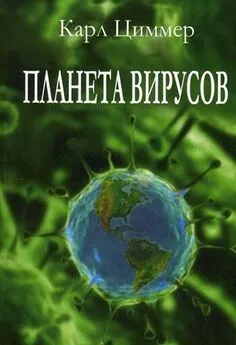
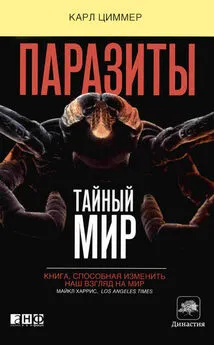

![Карл Циммер - Паразит – царь природы [Тайный мир самых опасных существ на Земле] [litres]](/books/1067054/karl-cimmer-parazit-car-prirody-tajnyj-mir-sam.webp)
